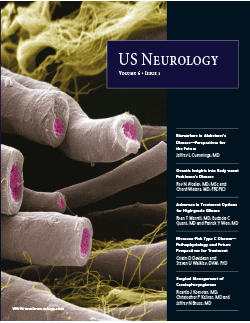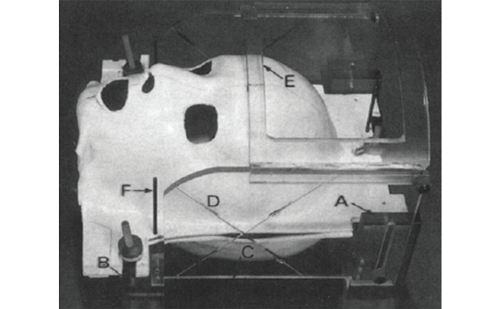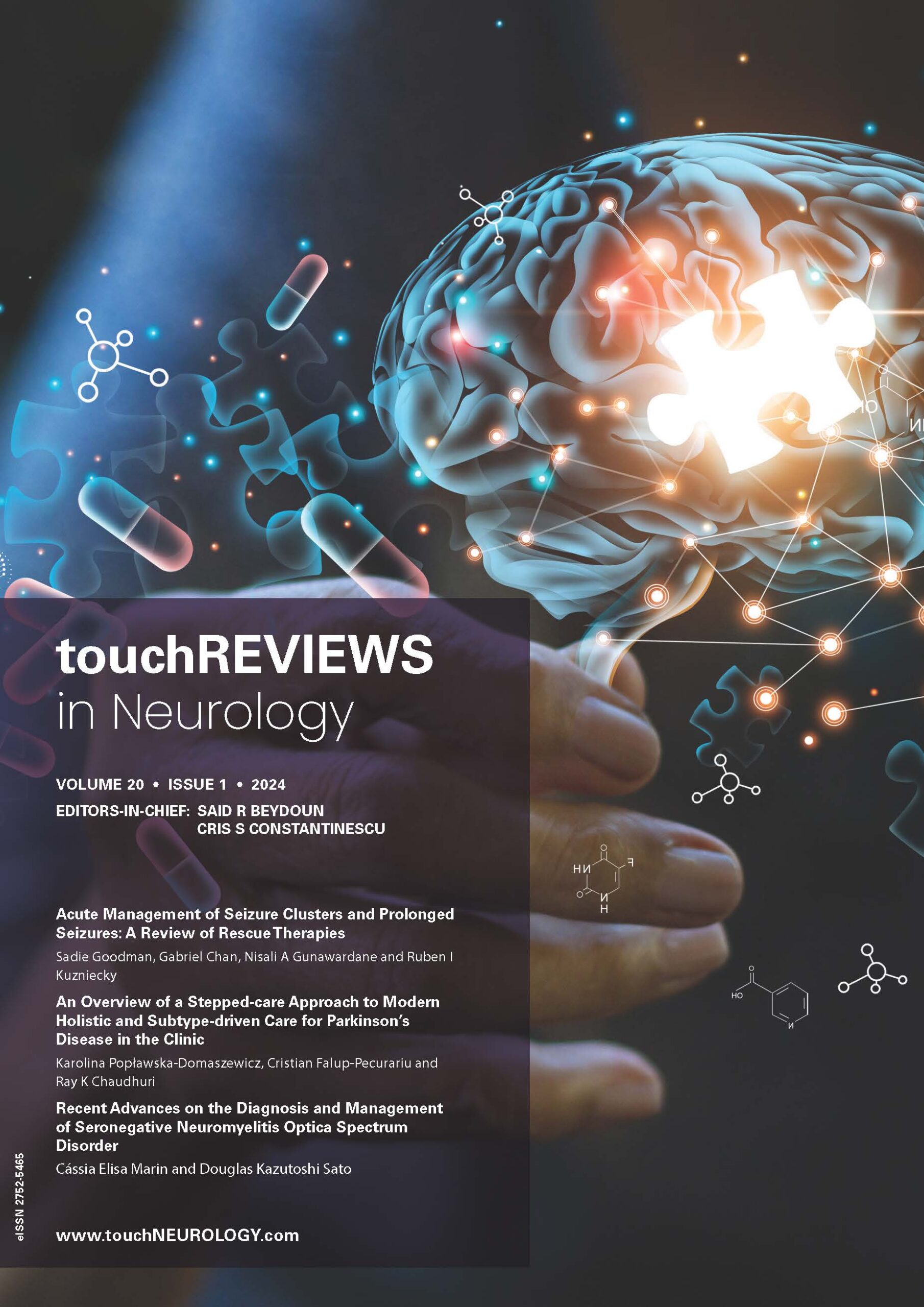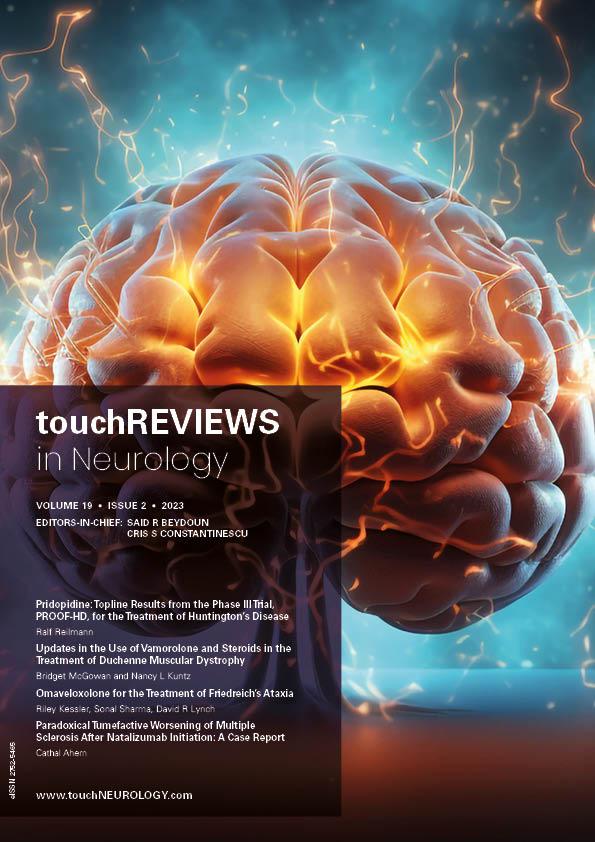
US NEUROLOGY – VOLUME 6 ISSUE 1 – SPRING 2010
Foreword
We are in the midst of one of the more exciting scientific transformations of all time. The perfect storm of a digital age, non-invasive imaging, an emerging scientific culture of data sharing, and an ever improving computational infrastructure has forever changed how we study the brain. Co-ordinated multisite trials where well described data are made […]
Current Issues
The term nanomedicine refers to a field in which the advances of nanotechnology are applied to health and medical diseases. This rapidly growing field is based on the remarkable advances being made in nanotechnology, a field in which materials (e.g. nanoparticles) and devices that have a size on the nanometer scale are developed.1 The relative […]
Opioids are a treatment option for moderate to severe pain in appropriately selected patients who have not responded to non-opioid therapies.1 Extended-release opioid formulations can be especially beneficial for the management of chronic moderate to severe pain because they release opioid over a sustained period, resulting in prolonged duration of action (eight to 24 hours […]
Neurodegenerative Disease
There has been remarkable progress in developing biological markers (biomarkers) that provide insight into the progression of Alzheimer’s disease (AD). Biomarkers document the course of AD from structural, functional, molecular, and chemical perspectives, and promise to assist in the development and monitoring of new therapies. Biomarkers have become particularly important to AD drug development for […]
Alzheimer’s disease (AD) is a neurodegenerative age-related progressive disease and the most common cause of dementia in the elderly.1 Current estimates hold that there are upwards of 5 million people with AD in the US.2 This number is expected to almost triple over the next few decades, and the worldwide incidence of AD will reach […]
Alzheimer’s disease (AD) is a progressive neurodegenerative disorder characterized by extracellular deposition of pathogenic amyloid-beta (Aβ) peptides, intracellular aggregation of hyperphosphorylated tau protein, and neuronal death.1,2 Molecular studies have shown that missense mutations in genes for amyloid precursor protein (APP), presenilin 1 (PS1), or presenilin 2 (PS2) account for the majority of familial AD cases.3,4 […]
Parkinson’s disease (PD) is a progressive neurodegenerative disorder. It has been classically described as a movement disorder involving the striato-nigral pathway characterized by resting tremor, bradykinesia, rigidity, and postural instability. It is now considered a multisystem disorder that includes motor and non-motor symptoms.1 The early form of the disease can have predominantly non-motor symptoms, which […]
Parkinson’s disease (PD) is the second most common neurodegenerative disorder, affecting up to 1.5% of the American population.1 It has been estimated that up to 10% of the affected population develops the disease by 40 years of age.2 The definition of early-onset PD (EOPD) varies among studies, and usually ranges between 40 and 50 years […]
Brain Trauma
Atherosclerosis is a complex inflammatory disease process of the arterial vessels.1 Chronic and acute infections have been implicated as risk factors that increase the risk of stroke, myocardial infarction (MI) and other vascular events. However, no single pathogen is likely to be responsible for elevated vascular risk.2 More likely, the combined effect of long-term exposure […]
Stroke is the third leading cause of death in the US, affecting approximately 795,000 patients annually.1 A recent analysis shows that only 3–5% of acute stroke patients actually receive intravenous thrombolytic therapy.2 An important cause of non-treatment is the strict time criteria for acute medical and interventional therapies: many acute stroke patients are ineligible for […]
High-grade glioma (HGG) is the most common type of primary brain tumour in adults and accounts for >75% of the estimated 22,070 newly diagnosed malignant primary brain tumours in the US each year.1 More than half of HGGs are glioblastoma (GBM), the most aggressive subtype. The remainder include anaplastic gliomas (AGs),1,2 such as anaplastic astrocytoma […]
Multiple Sclerosis
Basic Concepts of Multiple Sclerosis Multiple sclerosis (MS) is a relapsing inflammatory disease of the central nervous system. It is marked pathologically by discrete areas of demyelinated brain tissue in the white matter with accompanying inflammation.1 It is now evident that axonal loss accompanies demyelination early on in the disease process.2 Cortical pathology may be […]
Epilepsy
Epilepsy is a common, complex, and chronic neurologic disorder affecting an estimated 0.5–1% of the global population or approximately 50 million people worldwide,1,2 1.1–2.3 million of whom reside in the US.3 The ultimate goal of the treatment of epilepsy is to eliminate seizures without producing any side effects. Despite the plethora of antiepileptic drugs (AEDs) […]
Headache
Migraine is a highly prevalent disorder, affecting 27 million women and 10 million men in the US.1 Over the course of a lifetime, 43% of women and 18% of men will experience migraine.2 Direct and indirect costs from migraine exceed $15 billion per year in the US alone.3 Migraine patients suffer the burdens of acute […]
Niemann-Pick Disease
Lysosomal diseases are rare metabolic disorders that result from inherited defects in the endosomal/lysosomal system and often lead to severe clinical disease and premature death. The endosomal/ lysosomal system is a vital recycling center that plays a critical role in intracellular signaling and homeostatic events, including a primary role in the breakdown and salvage of […]
Surgery
Surgical-site infections remain a significant contributor to hospitalacquired infections despite continued efforts to reduce their occurrence. Infection at the operative site is associated with high morbidity, mortality, and prolonged hospitalization. Typically, in neurosurgical cases the infection rate varies between 1 and 4%. While antibiotic use,1 enhanced patient homeostasis (e.g. with respect to serum glucose levels […]
Craniopharyngiomas are epithelial tumours that arise from embryonic epithelial cells of the craniopharyngeal duct. They account for 1.2–4% of all primary intracranial neoplasms and 5–10% of intracranial tumours in children.1 Although these tumours are rarely malignant, they often grow adjacent to and distort critical neurovascular structures, particularly the visual pathways and hypothalamus, leading to significant […]

Trending Topic
Intracranial radiosurgery, no matter the means or methods of administration, is predicated on a core set of principles, including head immobilization and precise delineation of the treatment target. For some five decades after Leksell introduced the concept of stereotactic radiosurgery in 1951,1 rigid head fixation via an invasive device was an integral component towards these ends. […]
Journal Archive
touchREVIEWS in Neurology is a peer-reviewed, free-to-access, bi-annual neurology journal comprising review articles, case reports, practice guides, theoretical discussions, and original research. It features balanced and comprehensive articles written by leading authorities, addressing the most important and salient developments in the field of neurology.
Latest articles videos and clinical updates - straight to your inbox
Log into your Touch Account
Earn and track your CME credits on the go, save articles for later, and follow the latest congress coverage.
Register now for FREE Access
Register for free to hear about the latest expert-led education, peer-reviewed articles, conference highlights, and innovative CME activities.
Sign up with an Email
Or use a Social Account.
This Functionality is for
Members Only
Explore the latest in medical education and stay current in your field. Create a free account to track your learning.





